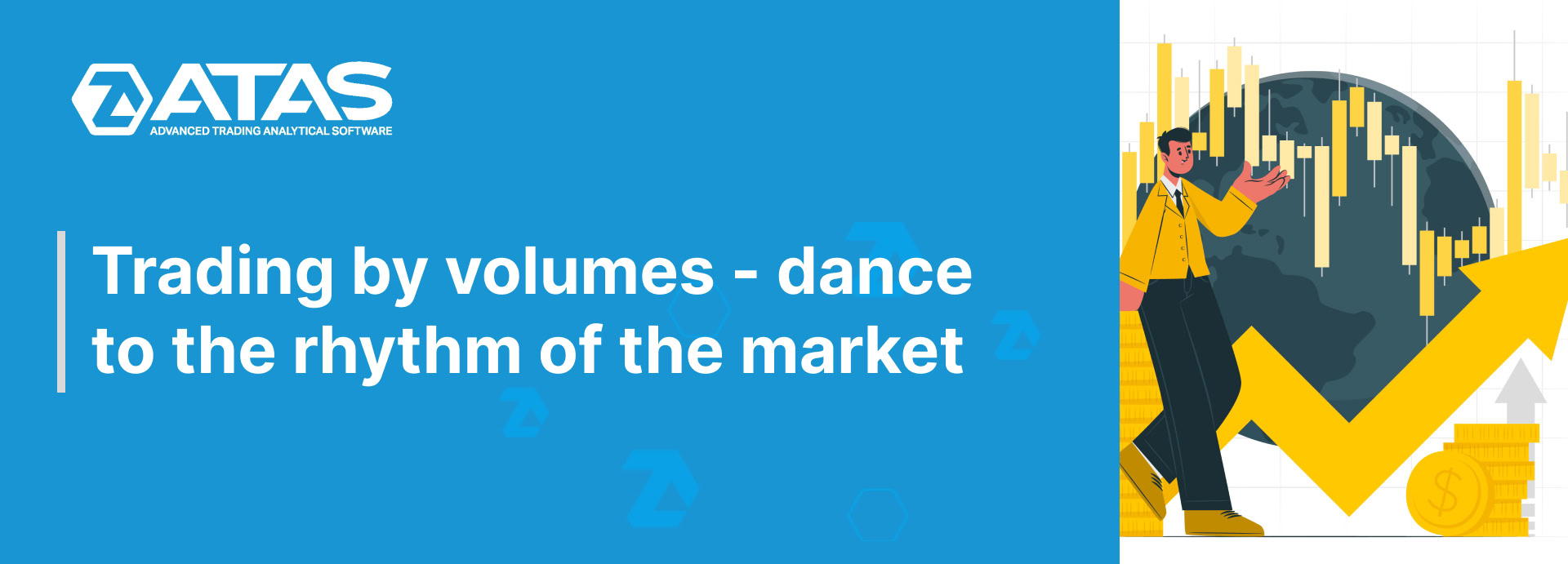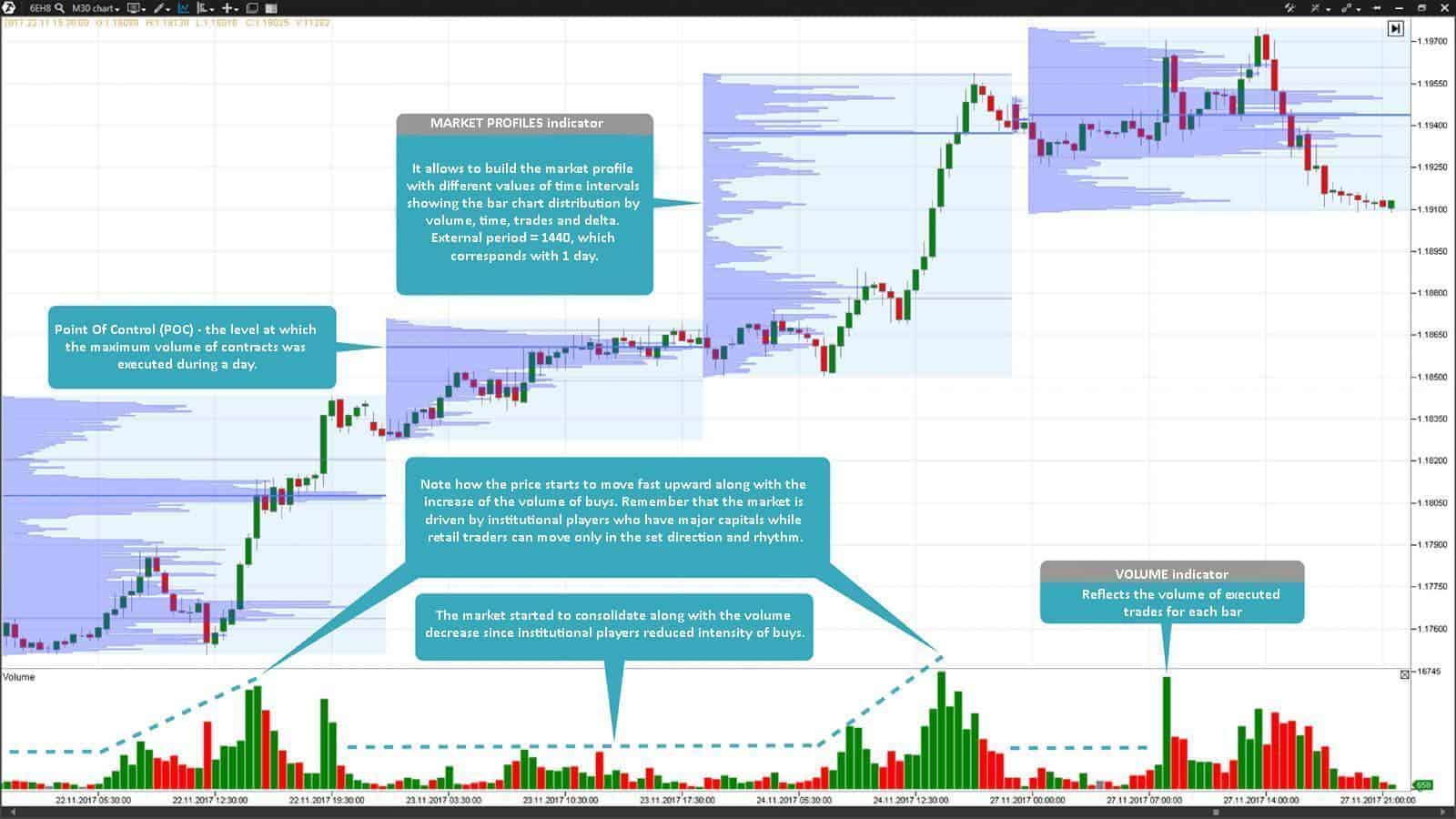Trading by volumes – dance to the rhythm of the market
Have you ever thought that trading by volumes has something in common with dances? Yes, it is useful sometimes to divert attention away from trading in order to restore focus and your mental energy after a volatile trading session. In this article, we will tell you about interesting correlations between these seemingly different types of activity.
Many of you surely danced to rhythmic music in a company of friends at least once. Perhaps, there were situations when you suddenly realized that you had gone out of rhythm. To recover your breath you went back to your table and the worst thing that could have happened to you were good-natured jokes of your friends.
Unfortunately, when it comes to trading in the futures market, going out of rhythm will cost you much more than the injured pride. It may cost you the trading capital. Not everyone can learn to dance as Fred Astaire but it’s up to you to make your trades dance to the futures market rhythm and keep your trading account at a constant rate of profit growth.
Before you continue to read we want to draw your attention to the fact that ‘volume’ is another word for ‘loudness’. We hope that this fact will help you to understand our analogy. Enjoy the reading!
In this article:
- What is the market rhythm?
- Why to track the loudness?
- How to learn that the loudness will change?
- Do you think your trades cannot dance?
What is the market rhythm?
The main parameters of the musical rhythm on the dance floor are its pace and loudness. The degree of intensity of one or another dance piece is determined by professional DJs who regulate these two parameters at their mixer boards. Increase of the music loudness (volume) increases the activity of the dancing people and its decrease, on the contrary, makes their movements more quiet and slows down their activity.
Volumes in the futures market work similarly with the only difference – the loudness analogue here are trading volumes. ‘Loudness’ in the market is determined by the volume of orders of institutional players and, like DJs at their mixer boards, institutional players can increase or decrease it thereby influencing the activity of retail traders – dancers on the dance floor.
Why to track the loudness?
Increase of the music loudness on the dance floor prompts an experienced dancer what to expect. Louder music and accelerating pace tell about increasing intensity and rise of emotions among the dancers, which also attracts new dancers to the dance floor.
Good DJs always know when to increase or decrease the intensity of the music doing it several times during one dance. The huge number of buttons, faders and blinking indicators serve to the only purpose – to control emotions of the dancing people. The flow of orders of institutional players, arriving to the futures market with one or another intensity, does nearly the same. It will constantly push the novices who use signals of the lagging indicators out of the market rhythm causing confusion and fear. However, those traders who use data of the order flow of the ATAS platform will feel themselves confident on the dance floor. Each trade will bring them satisfaction and nothing else.
How to learn that the loudness will change?
Really good dancers know that you should watch the DJ and his actions. When the DJ’s hands are on the mixer board, you should be ready for the change of loudness and, perhaps, music pace. As regards the futures market, the advanced technologies of the trading and analytical ATAS platform will allow traders to see volumes of the institutional capital, arriving to the market, in real time. It could be compared with the situation when you dance in a VIP area, rather than the dance floor where ‘retail traders’ dance, which is located close to the DJ and you can closely watch DJ’s actions at the mixer board always dancing to the rhythm even when the DJ changes it.
Experienced futures traders know that you should closely watch the trading volumes. Appearance of high volumes points to the interest of institutional players, which means that their major capital entered the dance floor and the party has started. The momentum slows down and the market starts to consolidate as long as the institutional ‘DJs’ start to decrease trading volumes.
Do you think your trades cannot dance?
Let’s have a look at the ‘mixer board’ of institutional players in the form of a chart of a EUR futures contract (ticker: 6E) from the ATAS platform connecting several instruments of the advanced market volume analysis to it:
- Market Profiles indicator — data about a number of trades are presented in the form of a horizontal bar chart located in the price chart. All trades executed during a selected time period are taken into account in the horizontal volume and distributed by respective prices. For example, if you trade on the 30-minute timeframe (M30 chart), you can add the Market Profiles indicator to the 30-minute chart with the data by horizontal volumes for 1 day. A fabulous value of this indicator lies in the fact that it reflects the interests of the market participants to the price levels.
- Volume indicator — data about a number of executed trades are presented in the form of a vertical bar chart located under the price chart. Each bar chart column corresponds with a number of bought or sold contracts for a certain period of time. For example, if you trade on the 30-minute timeframe (M30 chart), each column reflects information about how many contracts were bought or sold during 30 minutes.
30-minute EUR futures contract (ticker: 6E) chart. Trading volume data are available in all futures markets. Monitor them to trade in one ‘rhythm’ with institutional players.
If your trades do not yet move to the rhythm of the market, why don’t you teach them to do it? To achieve that you do not need to master dancing movements for years overstretching yourself with everyday dance classes. It is sufficient to open your trades in the futures market depending on the trading volume indicators. If you want your trades to stay to the market rhythm, you just need to learn how to use advanced instruments of the ATAS platform.
Perhaps, you’ve never visited a dance school and you cannot impress anyone on the dance floor. Instead you have one excellent possibility to show off with profitable trades on your trading account. In case you haven’t yet used instruments of the advanced market volume analysis of the ATAS platform in order to ‘dance’ to the rhythm of the order flow of institutional players and trading volumes, maybe, it’s high time you started. To do it, you just need to download the ATAS platform free of charge using the link at the beginning of the article.




